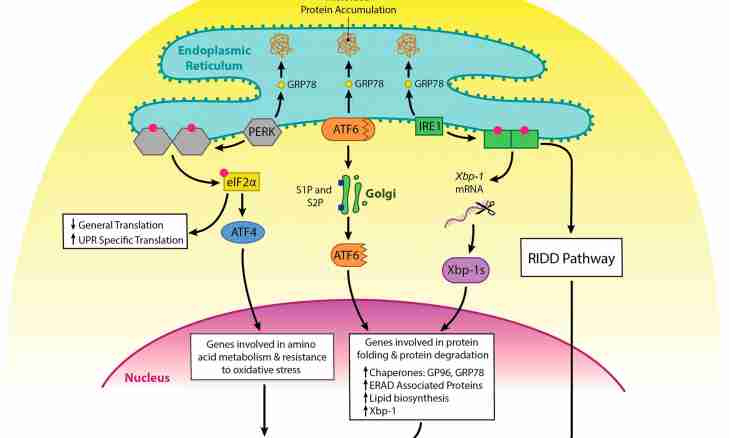Proteins are the most important organic compounds among all components of living cell. They have various building and perform various functions. In different cages them can be from 50% up to 80% of weight.
Proteins: what they represent
Proteins are high-molecular organic compounds. They are constructed of atoms of carbon, oxygen, hydrogen and nitrogen, but they can include also sulfur, iron and phosphorus.
Monomers of proteins are the amino acids connected among themselves by peptide communications. Polypeptides can incorporate a large number of amino acids and have big molecular weight.
The molecule of amino acid consists of the radical, an amino group – NH2 and carboxyl group – COOH. The first group shows the main properties, the second – acid. It causes the dual nature of chemical behavior of amino acid – its amphoteric character and, besides, high reactivity. The different ends of amino acid unite in a chain of proteinaceous molecules.
The radical (R) is that part of a molecule which differs at different amino acids. It can have the same molecular formula, but other building.
Functions of proteins in an organism
Proteins perform a number of the major functions both in separate cages, and in all organism in general. First of all, proteins perform structural function. Membranes and organelles of a cage are under construction of these molecules. Collagen – an important component of connecting fabric, a keratin is a part of hair and nails (and also feathers and horns at animals), elastic protein elastin is necessary for sheaves and walls of blood vessels. Also the enzymatic role of proteins is not less important. By the way, all biological enzymes have the proteinaceous nature. Thanks to them course of biochemical reactions in an organism at rates, acceptable for life, is possible.
Molecules of enzymes can consist only of proteins or include also nonprotein connection – a coenzyme. Vitamins or ions of metals most often act as coenzymes.
Transport function of proteins is carried out thanks to their opportunity to connect to other substances. So, hemoglobin connects to oxygen and brings him from lungs to fabrics, the myoglobin transports oxygen to muscles. Serumal albumine of blood transfers lipids, fatty acids and other biologically active agents.
Squirrels carriers act in the region of cellular membranes and carry out transport of substances through them.
Function, protective for organism, is performed by specific proteins. The antibodies developed by lymphocytes fight against alien proteins, interferona protect from viruses. Thrombin and fibrinogen promote formation of blood clot and protect an organism from blood loss.
The toxins emitted by living beings in the protective purposes also have the proteinaceous nature. In organisms targets for suppression of effect of these poisons antitoxins are produced.
Regulatory function is carried out by regulatory proteins – hormones. They control course of physiological processes in an organism. So, insulin is responsible for glucose level in blood, and at its shortage there is diabetes. Proteins sometimes perform also power function, but are not the main energy carriers. Full splitting of 1 gram of protein gives 17.6 kJ of energy (as well as at glucose disintegration). However proteinaceous connections are too important to an organism for creation of new structures, and as a power source are used extremely seldom.

